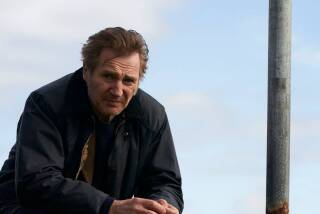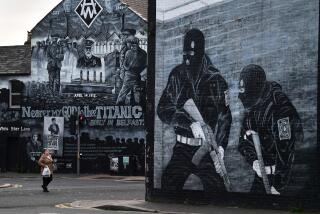Wild Irish roads
- Share via
IN HIS EXTRAORDINARY examination of landscape, history, texture and storytelling, “Connemara: Listening to the Wind,” the author Tim Robinson says that “right living in a place entails a neighborly acquaintance with those who lived there in previous times.” What Robinson suggests is that whoever we are now is derived from those who went before us -- their stories, their architecture, their failings, their journeys, the roads they took. Things connect, and in those connections lies a certain mystery.
There is a massive ongoing debate in Ireland about a motorway destined to destroy one of the richest archeological landscapes in Europe. The expanded route for the M3 motorway goes through the heart of the Gabhra Valley, between the hills of Tara and Skryne. Legend records that St. Patrick set ablaze his Pascal fire on the Hill of Slane, just as the pagan fire was to be lighted on Tara. Successive Irish kings were crowned there. History lies deep. In a week when Irish politicians come to America bearing bowls of shamrock, it’s interesting to ponder that they’re going back to dreams of concrete.
The proposed road is a four-lane tollway, the sort that Ireland has grown fond of in recent times. Cultural and environmental activists predict that the motorway will inevitably be followed by all kinds of commercial and ancillary development. Much of the Emerald Isle is key-chained with crossovers, flyovers and high steel bridges these days.
“Future tourists are sure to be confused by what they encounter in County Meath and indeed throughout the country,” says Muireann Ni Bhrolchain of the Campaign to Save Tara, a newly formed umbrella group for the dozens of opposition groups. “Rampant development throughout the country, much of it facilitated by corrupt officials, has been a byproduct of Ireland’s breakneck economic expansion over the last decade.”
Roads touch our lives in more intimate ways too. Recently I was reading a book about the Irish high kings to my 8-year-old son, John Michael. He loved the Stone of Destiny, the ancient coronation stone, and was fascinated by the notion that the stone would roar when touched by the true king.
“Did it shout?” he asked. I said I had no idea, but I imagined so.
“Good,” he said, and then asked: “Have you ever been there?” Many times, I told him, even once when I was his age. His eyes lighted up, as young eyes do at the wonder that their fathers had ever been the same age as them.
“Did you ever hear it roaring?” he asked. I said I hadn’t, but I bet it would for him.
Just a few hours later I received a series of photographs showing that work on the M3 had already begun. Trees were being ripped up in and around the Gabhra Valley, which happens also to be the site of the proposed interchange at Blundelstone, near the heart of the matter. It seemed that the Irish National Roads Authority and the Meath County Council were trying to get a jump on construction so that the proposed rerouting of the motorway could not take place.
So be it, perhaps. Roads find their places. Ireland is changing. Perhaps we should just let it change.
But then the question is, what sort of Ireland might remain?
The area of highest contention is about two miles of the Tara-Skryne valley. Few people dispute the wider issue of the need for a better road. Defenders point out that the motorway is about three-quarters of a mile from the Hill of Tara. It will take 30 minutes off the journey between Dublin and Cavan. Some even claim, amazingly, that it will restore tranquillity to the area. There is even an argument that the road and its floodlights will become part of the archeology of the future. Hallelujah, the future says. A four-lane highway. Another Stone of Destiny.
But we bury the past only if we’re ashamed of it. We have a responsibility to heritage, environment and, indeed, imagination. Yet most meaningful Irish debates these days seem to take place only in the realm of time and money. Half-hours are crucial to the economics of the future. Those who oppose these notions are labeled contrary, dreamy, populist. Even when viable alternate routes are proposed, the proponents are labeled simplistic. But nothing is simple, not even simplification.
As an Irish novelist living in New York, I’ve been told that I should keep my “bourgeois,” “emigrant” and “sentimental” nose out of the debate. It is not my story. It is not my road.
But the road here has gone back an awful long way. If we are not to be ashamed in the future, we must take whatever care we can of our past. In a strange, naive way, I think my son, here in New York, might understand this too.
These are our roaring stones -- and sometimes they take root in the most unlikely places.
More to Read
Sign up for The Wild
We’ll help you find the best places to hike, bike and run, as well as the perfect silent spots for meditation and yoga.
You may occasionally receive promotional content from the Los Angeles Times.






